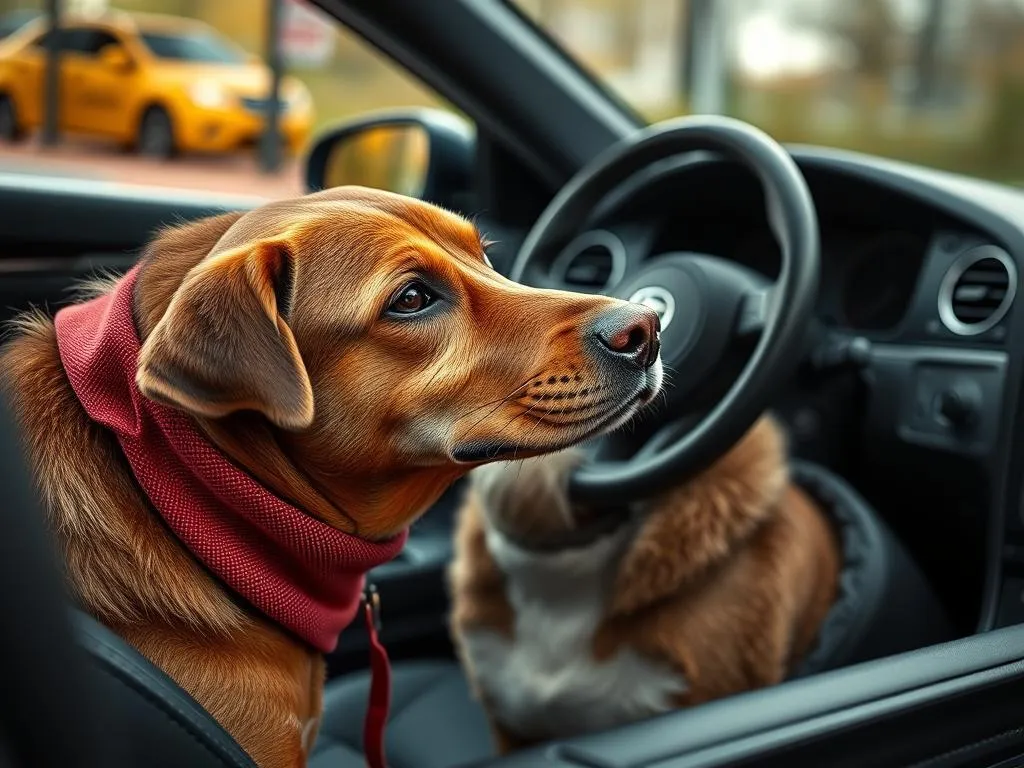
Introduction
As any dog owner knows, traveling with your furry friend can be both a joy and a challenge. Did you know that approximately 31% of pet owners admit to being distracted by their pets while driving? This statistic highlights the importance of how to dog proof your car to ensure not only the safety of your beloved pet but also the integrity of your vehicle. In this article, we will explore the essential steps to make your car a safe and comfortable space for your dog, covering everything from understanding potential risks to practical tips for travel and post-trip care.
Understanding the Risks
Potential Hazards of Dogs in Cars
When it comes to how to dog proof your car, understanding the risks associated with traveling with dogs is crucial. Dogs can be curious, and their presence can lead to distractions while driving. Loose items in the car, coupled with an excited or anxious dog, can create a hazardous environment. Moreover, when parked, the temperature inside a vehicle can rise rapidly, leading to the risk of heatstroke. This is particularly dangerous for pets left in the car, even for a short duration.
Additionally, dogs can cause damage to car interiors. Their nails can scratch seats, and their shedding can leave behind unwanted hair and odors. Knowing these potential issues is the first step in dog proofing your vehicle.
Behavioral Issues
Another aspect to consider is your dog’s behavior during travel. Dogs often experience anxiety or restlessness in cars, which can lead to excessive barking, whining, or even destructive behavior. They may chew on seats or scratch upholstery out of boredom or stress. Furthermore, if a dog becomes agitated during stops, there is a risk of escape, which can pose a significant safety hazard for both the dog and other road users.
Preparing Your Car
Cleaning and Organizing the Interior
Before you start making your car dog-proof, it’s essential to clean and organize the interior. Begin by removing any clutter and unnecessary items that could become projectiles during sudden stops. Vacuum the seats and floor to eliminate dirt and pet hair, as this can help prevent odors from permeating the car.
Consider using a lint roller for quick hair removal and keep a small trash bag in your car for any waste during your travels. A clean and organized space will not only make your vehicle more pleasant but will also contribute to your dog’s comfort.
Choosing the Right Materials
To further protect your car’s interior, consider investing in specific materials designed for pet owners. Dog proof seat covers and durable floor mats are excellent options to safeguard against spills and stains. Look for dog-proof fabrics that are resistant to tears and easy to clean. Waterproof covers can be especially beneficial, as they help shield against accidents and muddy paws.
Safety Restraints and Barriers
Dog Seat Belts and Harnesses
One of the most effective ways to ensure your dog’s safety while traveling is by using a dog seat belt or harness. These restraints can prevent your dog from moving around the vehicle and distracting you while driving. It’s essential to choose a seat belt that is compatible with your car’s seatbelt system and a harness that fits your dog properly.
Using a dog harness is particularly beneficial because it distributes the force of sudden stops across a larger area of your dog’s body, reducing the risk of injury. Make sure to practice putting the harness on and off at home to help your dog get accustomed to the restraint.
Pet Barriers
Another option for keeping your dog secure is to install a pet barrier. These barriers come in various types, including mesh and hard barriers that can separate the front and back seats of your vehicle. They can be easily installed and removed, making them a practical choice for many dog owners. Ensure the barrier is securely fastened to prevent your dog from slipping through during travel.
Travel Essentials for Dogs
Dog Carriers and Crates
Using a dog carrier or crate during travel can provide your dog with a sense of security and limit their movement within the vehicle. It’s essential to choose the right size for your dog; they should be able to stand, turn around, and lie down comfortably.
Look for carriers with safety features such as ventilation and secure fastenings. If you’re traveling with a larger dog, consider a travel crate that can be anchored securely within your vehicle for added safety.
Essential Gear
In addition to a carrier or crate, there are several essential items you should have on hand during your travels. A portable water bowl is vital for keeping your dog hydrated during long drives. A travel bed can provide comfort during breaks, and a sturdy leash is necessary for pit stops.
Don’t forget to include a first-aid kit tailored to your dog’s needs. This should include items such as bandages, antiseptic wipes, and any medications your dog may require.
Behavioral Training for Car Travel
Getting Your Dog Comfortable with the Car
Training your dog for car travel starts with making the car a familiar and comfortable space for them. Begin by allowing your dog to explore the vehicle while it’s parked. Use treats and positive reinforcement to encourage them to sit in the car and become accustomed to the interior.
Once your dog seems comfortable, gradually increase the length of your car rides, starting with short trips and progressing to longer ones. This gradual acclimation will help reduce anxiety and restlessness during travel.
Training Commands for Car Safety
In addition to getting your dog used to the car, teaching them specific commands can help maintain safety while driving. Commands such as “stay” and “sit” can keep your dog calm and secure in their designated spot. Regular practice of these commands will reinforce their importance during car rides, ensuring that your dog remains safe and well-behaved on the road.
On-The-Road Safety Tips
Regular Breaks
During long road trips, it’s essential to take regular breaks for both you and your dog. Stopping every couple of hours allows your dog to stretch, relieve themselves, and hydrate. Consider finding pet-friendly rest areas where your dog can safely play and explore.
During these breaks, engage your dog in activities like fetch or a short walk to help burn off excess energy.
Keeping Windows and Doors Secure
When traveling with your dog, it’s important to ensure that windows and doors are secure. Avoid rolling down windows completely, as an excited dog might jump out or get injured by objects flying past. Instead, keep windows slightly ajar for ventilation while ensuring that they are not wide enough for your dog to escape.
Additionally, make sure all doors are securely locked, especially when parked. This will prevent your dog from accidentally opening the door and jumping out during stops.
Monitoring Temperature
Temperature control in your car is vital for your dog’s well-being. Even on mild days, the inside of a parked car can heat up rapidly, leading to heat stress or heatstroke. If you must leave your dog in the car, ensure that the windows are cracked for ventilation and that you are gone for only a brief period.
Keep an eye on your dog for signs of heat stress, such as excessive panting, drooling, or lethargy. If you notice any of these symptoms, take immediate action to cool them down.
Post-Travel Care
Cleaning the Car After Travel
Once your journey is complete, it’s time to clean your car to remove pet hair and odors. Use a vacuum cleaner with a brush attachment to thoroughly clean the seats and floor. For stubborn hair, consider using a rubber glove to gather it easily.
To eliminate odors, consider using an enzyme-based cleaner that specifically targets pet smells. Regular cleaning will help keep your car fresh and pleasant for future adventures.
Checking Your Dog After Travel
After a long trip, it’s important to check your dog for any signs of discomfort or irritation. Look for any unusual behavior, such as excessive scratching or licking, which could indicate allergies or irritations caused by travel. Routine vet checks are crucial, especially after long trips, to ensure your dog is healthy and happy.
Conclusion
In summary, how to dog proof your car involves a combination of understanding potential risks, preparing your vehicle, and investing in the right safety measures and gear. By taking proactive steps to create a safe and comfortable environment for your dog, you can enjoy worry-free travels together. Implementing these tips will not only enhance your dog’s safety but will also ensure a more enjoyable experience for everyone involved. Happy travels!









